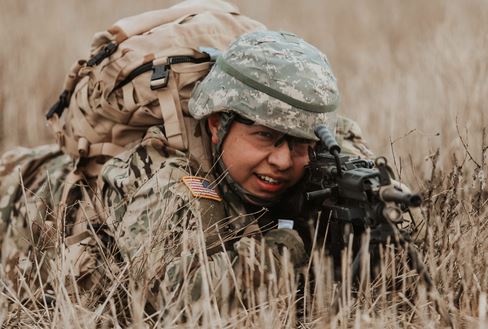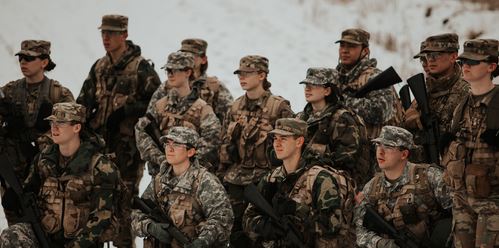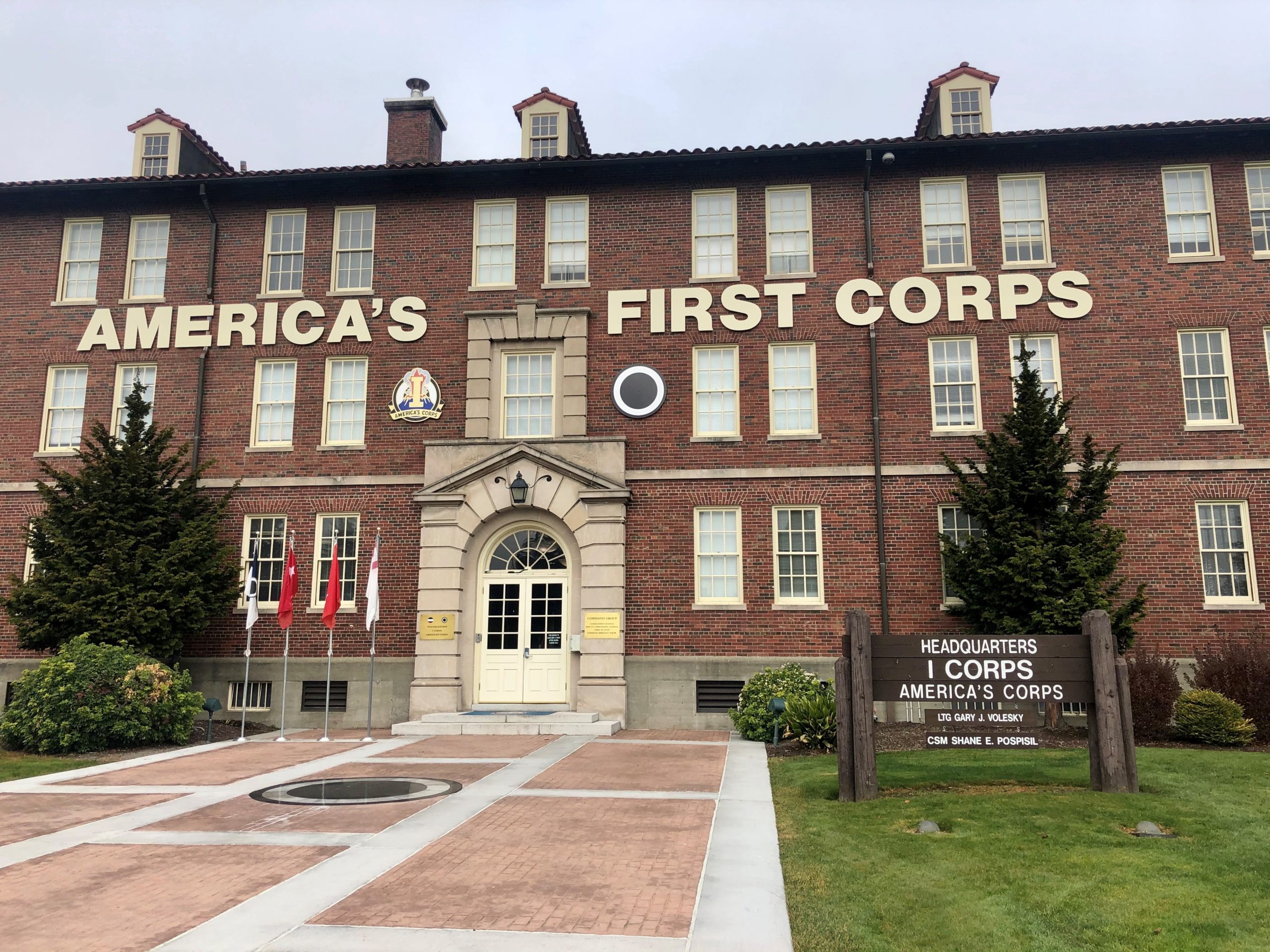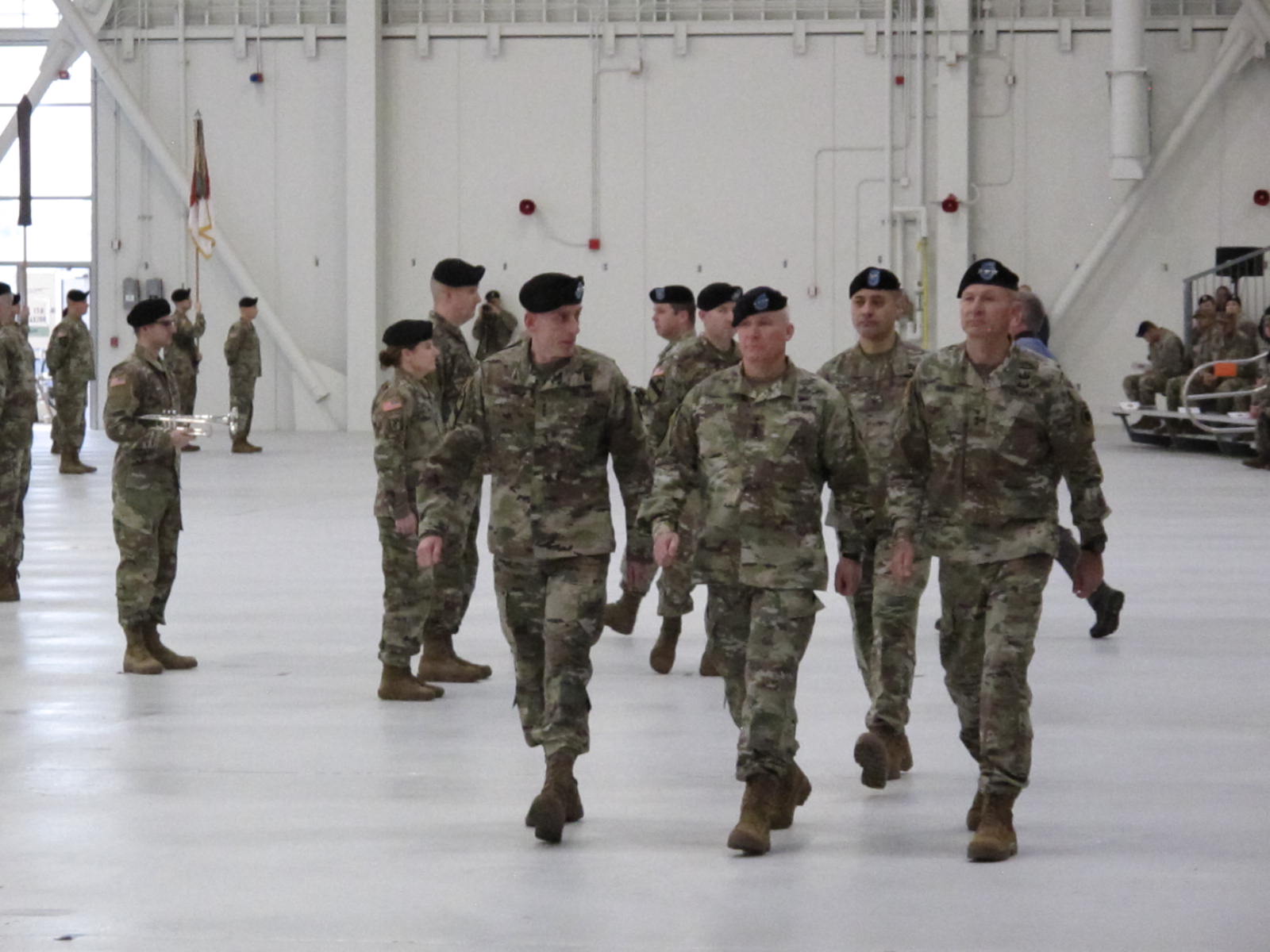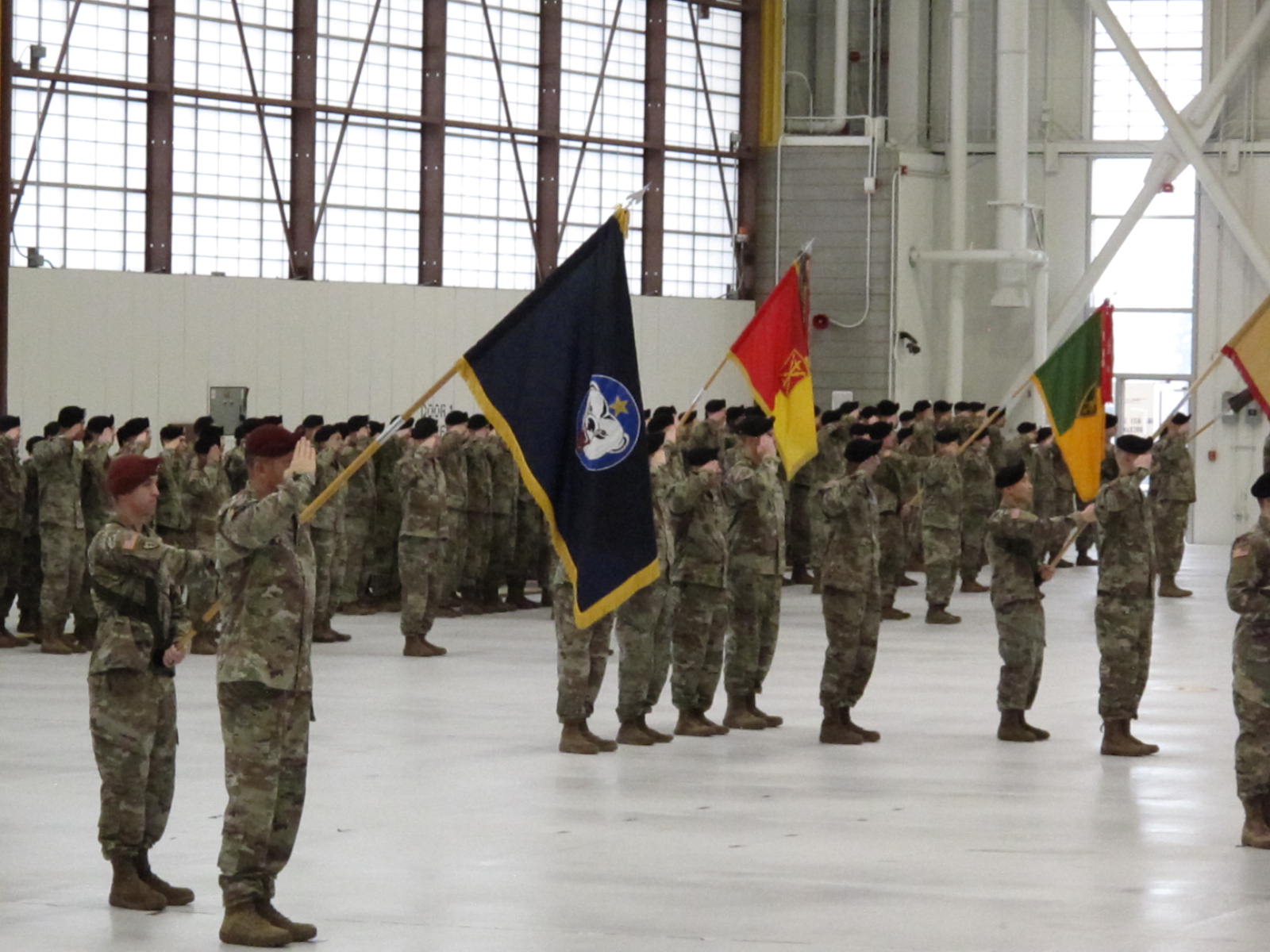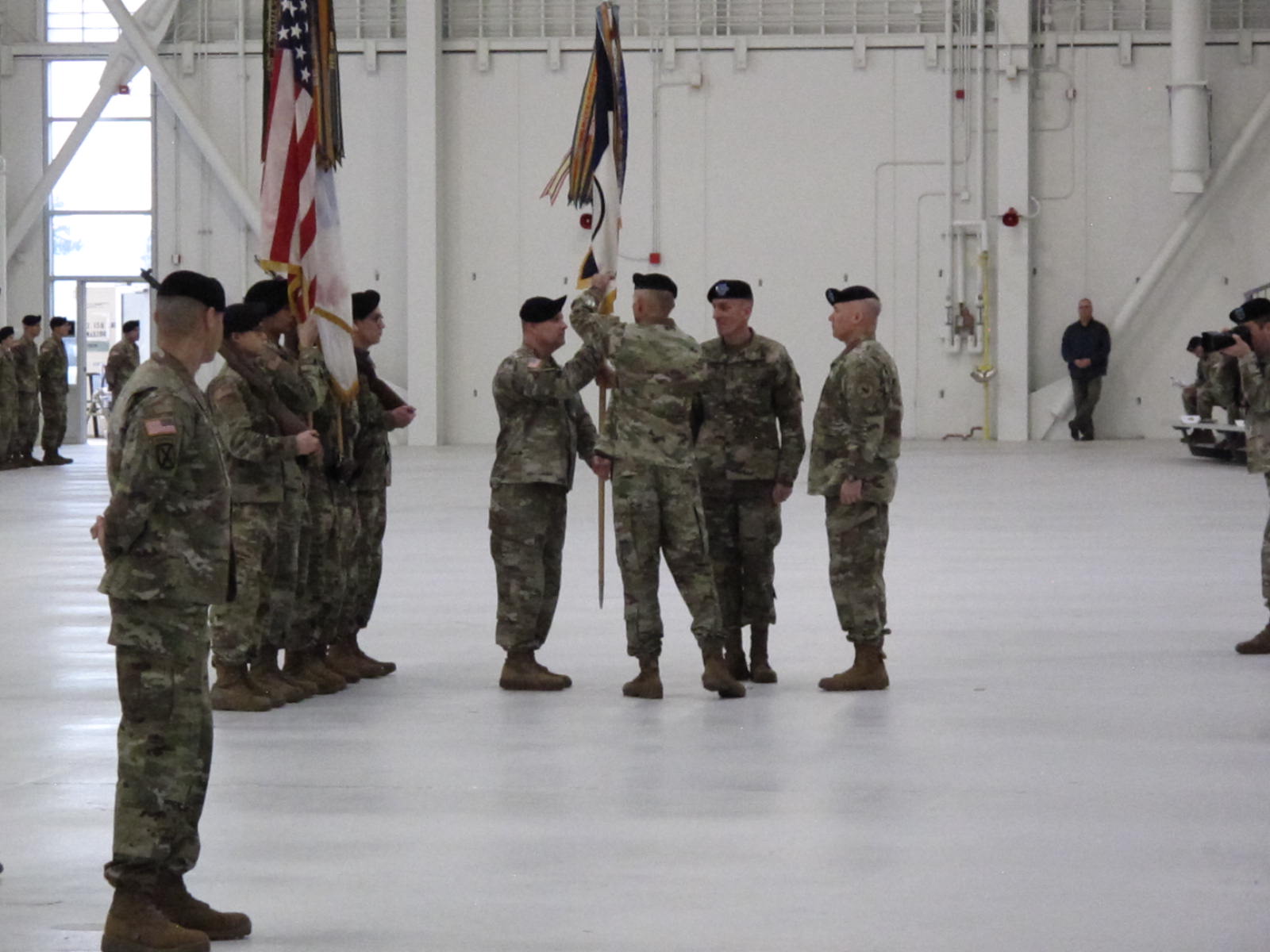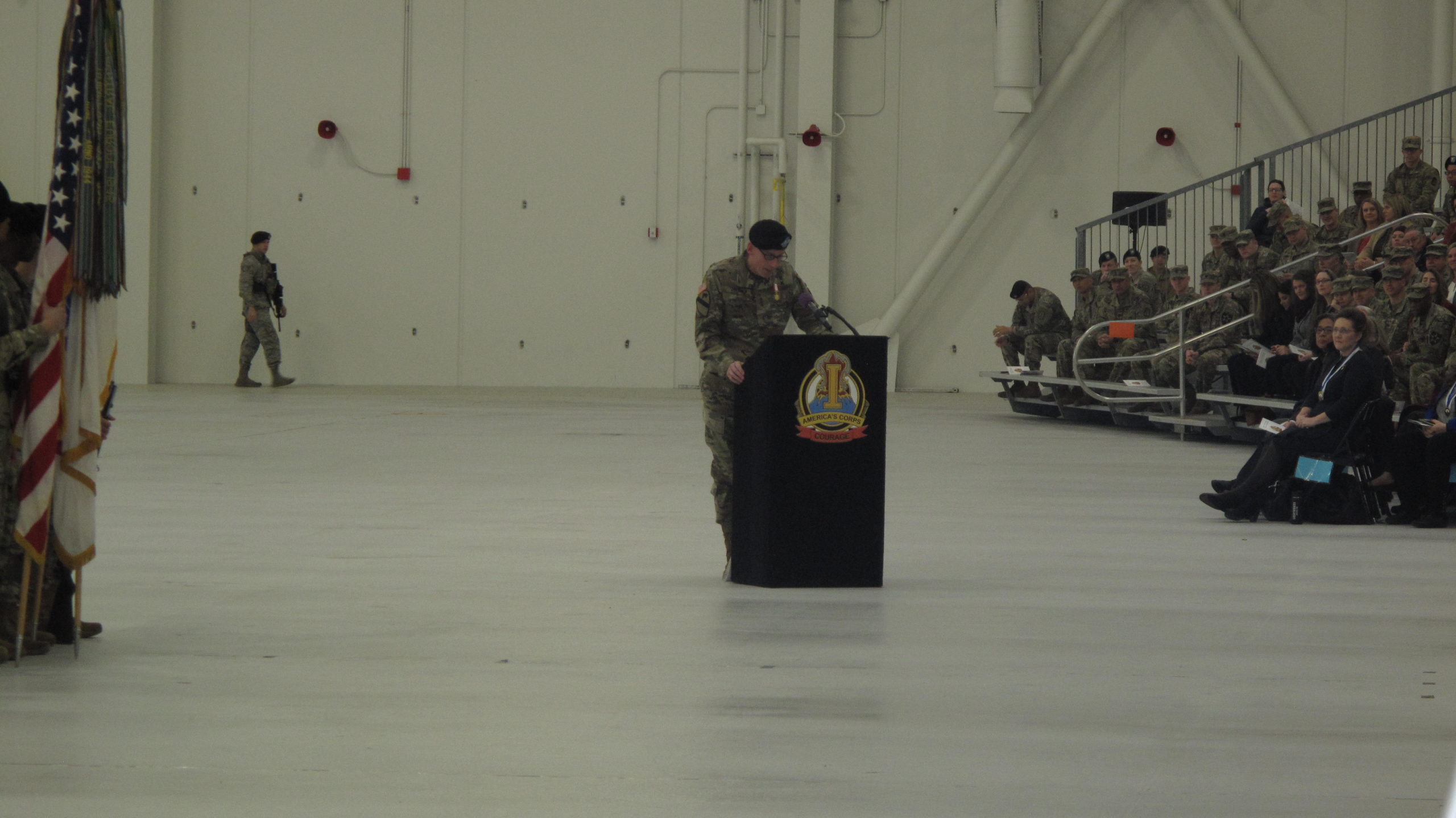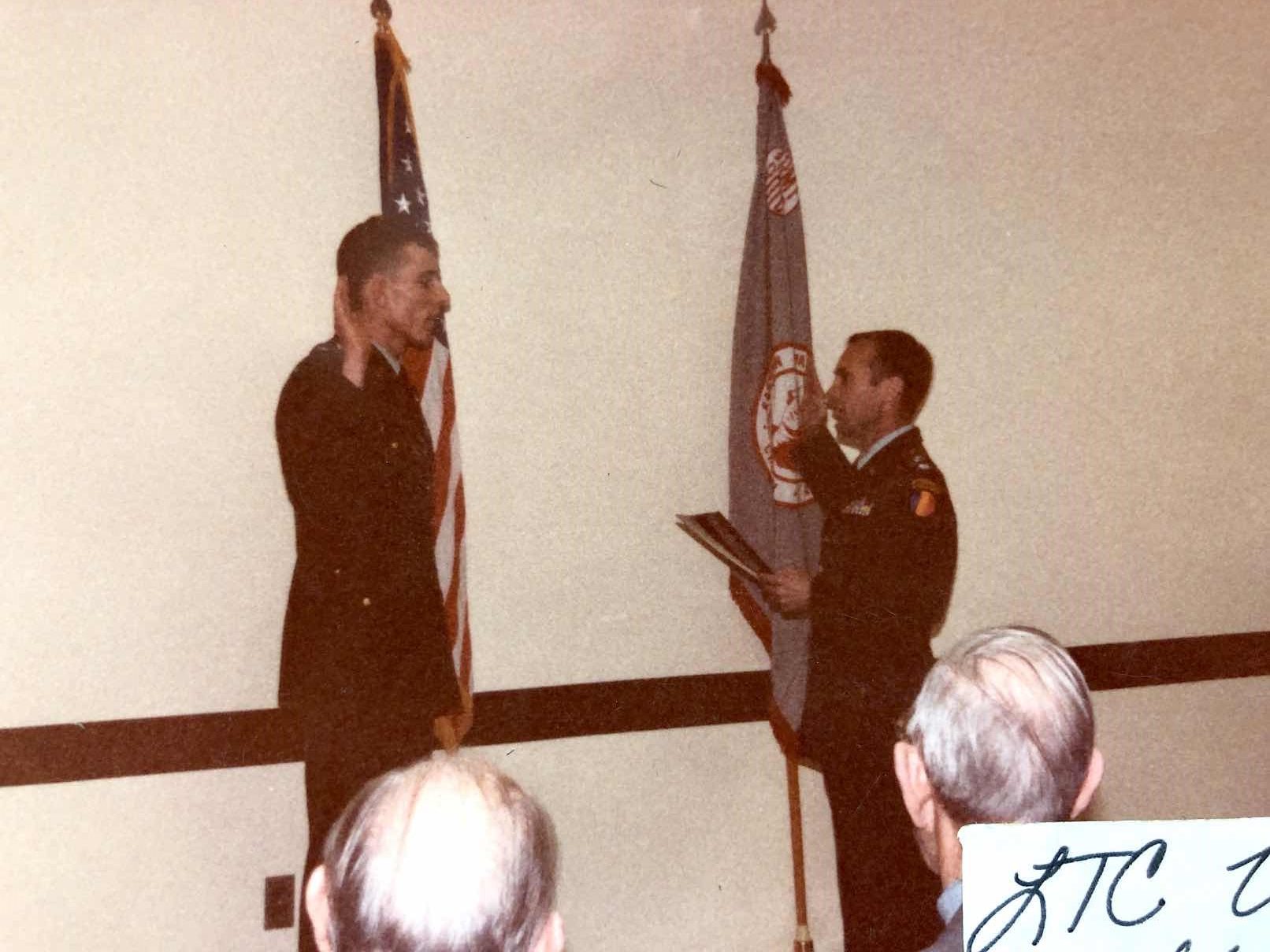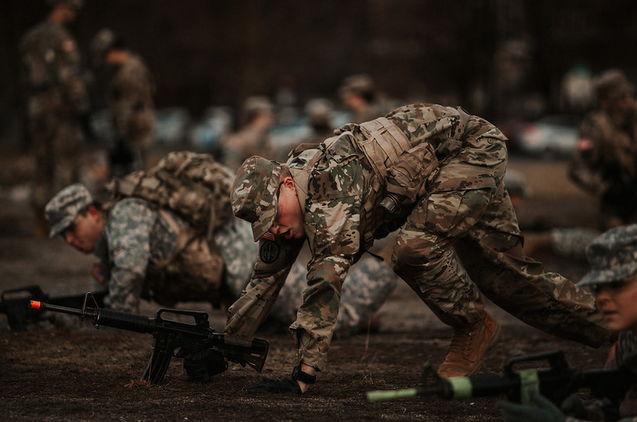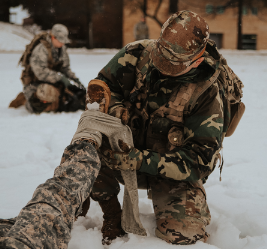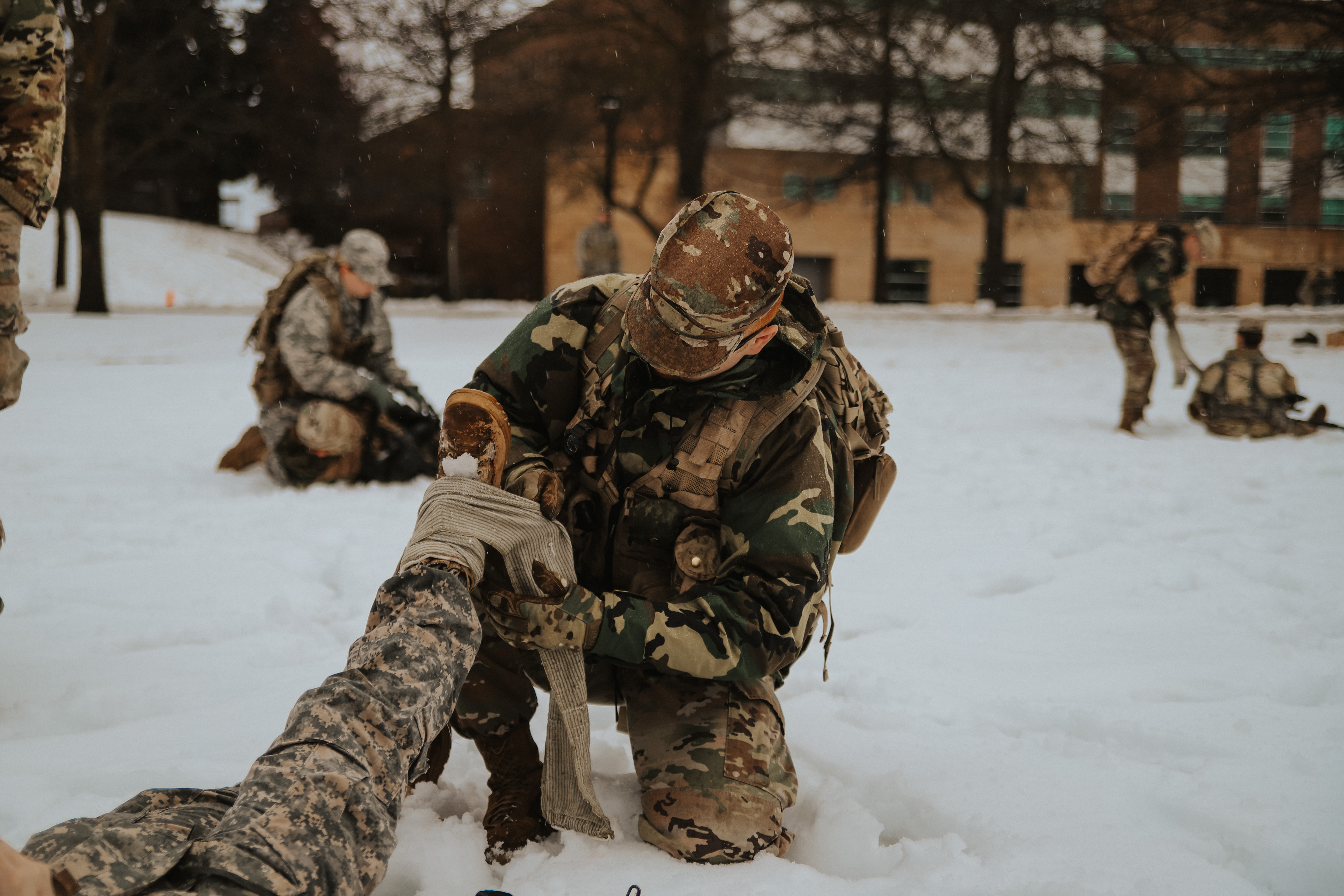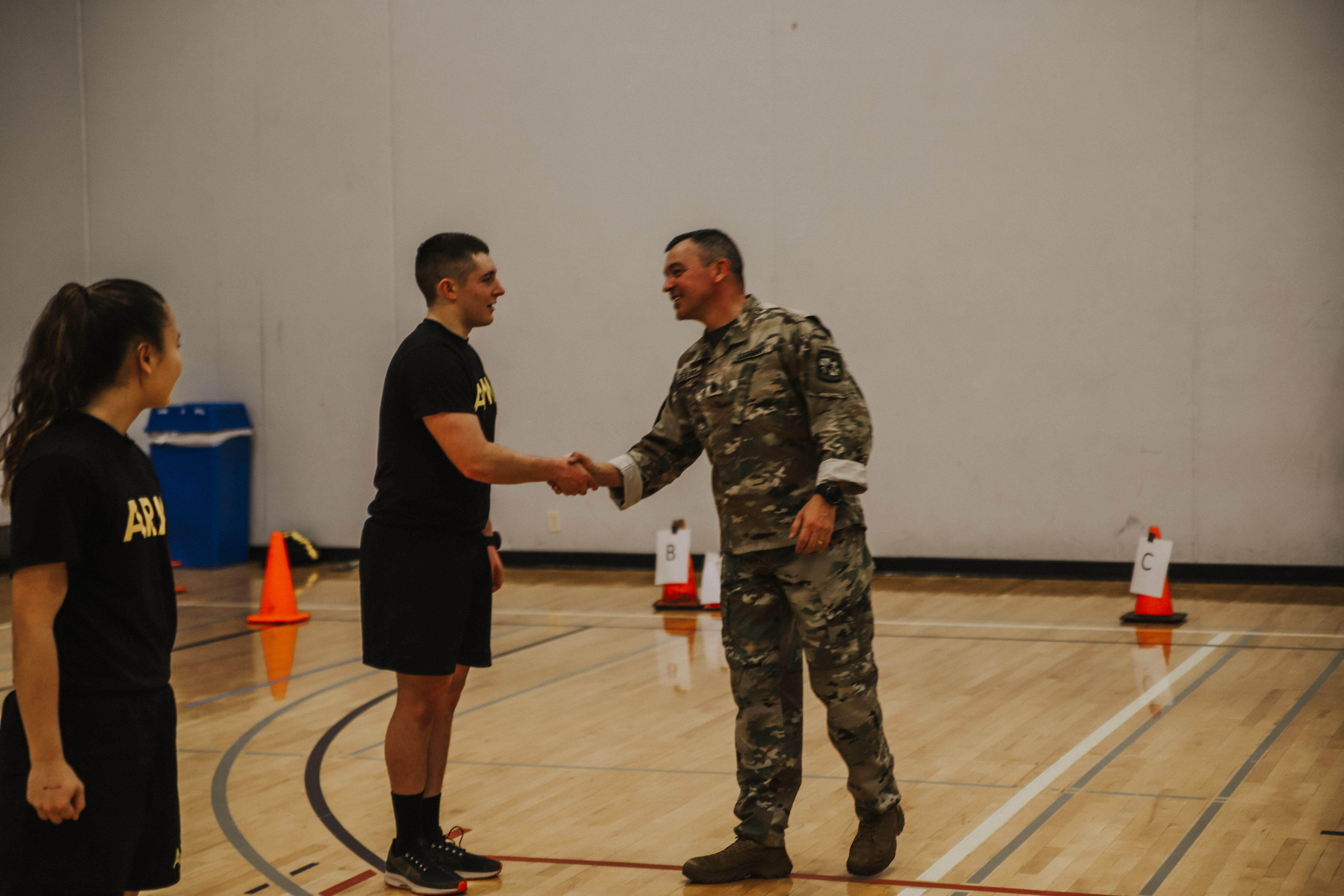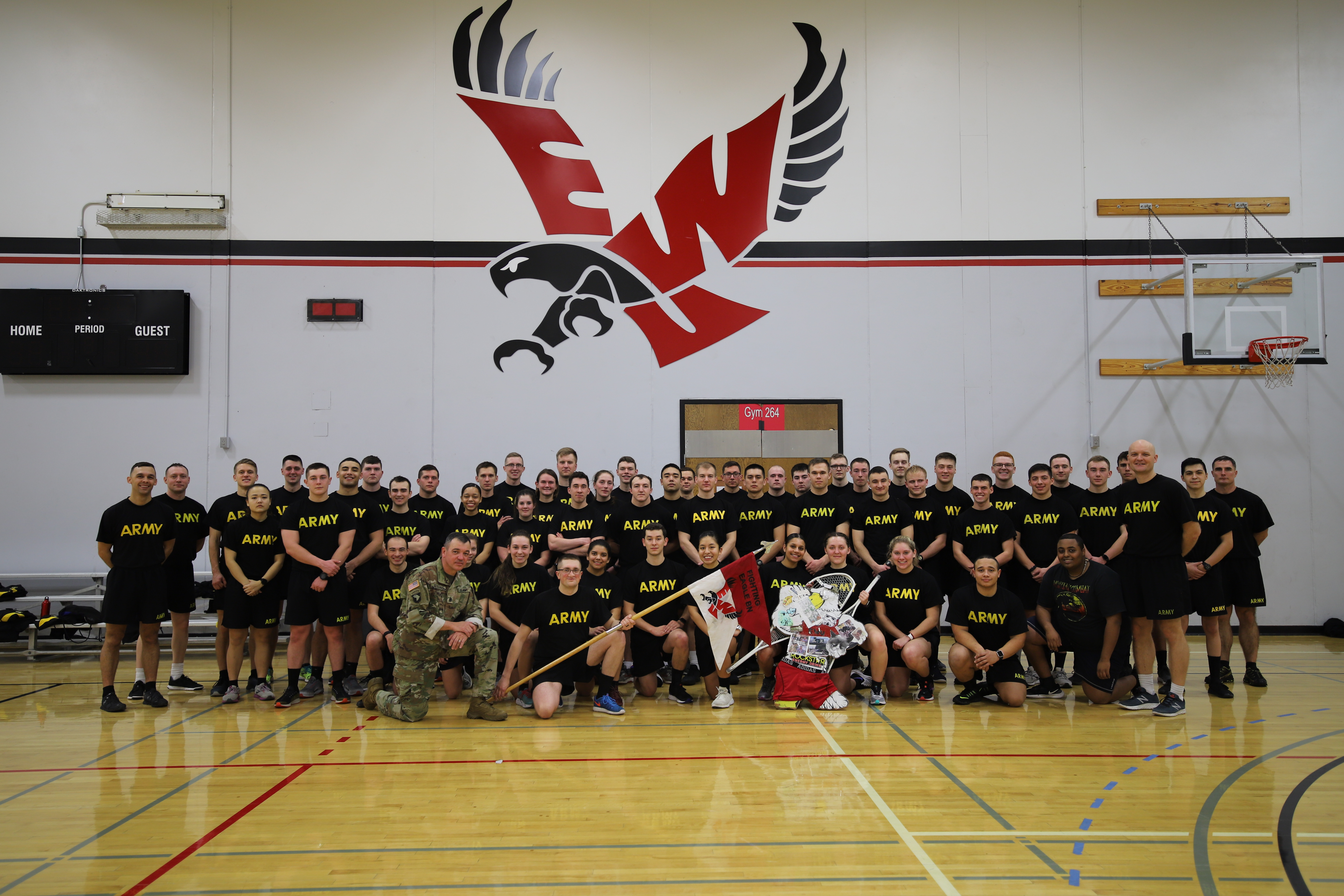By: Cadet Marcos Sanchez
On February 13th 2020, Eastern Washington University (EWU) Reserve Officer Training Corp (ROTC) traveled out to Montague’s Farm, adjacent to the Cheney Campus, in order to refresh Cadets on basic squad operations. The squad operations training consisted of Attack, Movement to Contact (MTC) and Reacting to Indirect Fire (IDF). Cadet Cesar Guzman, the officer in charge (OIC) of planning the lab, did this by splitting up the lab into three iterations.

The first iteration was actions on contact leading into reacting to IDF. During the lane when the Cadets took contact from an enemy they were also hit with indirect fire which allows them to exercise their mental agility and maneuver the element to safety. The second iteration was an MTC exercise which is a search and destroy tactic. The purpose of an MTC is to move into an area where the enemy is known, take contact and then destroy the enemy using various tactics such as flanking. The third iteration was a squad attack which is similar to the MTC but in this case the exact enemy location is known so the Cadets squad is the one who initiates the contact.

One of the Cadets conducting these lanes was Cadet Valentino Olmstead. The way he went about excelling at these tasks was by maintaining good communication with his team leaders. To Cadet Olmstead “communication is one of if not the most important part of controlling an element because without it, your subordinates don’t know what to do”. Another key process he used was After Action Reviews of AARs which allowed him to talk with his squad and figure out what went well and what could have been improved on.

Cadet Cesar Guzman directs personnel during the Leadership Lab.
This week’s lab was the last of the crawl phase when it comes to squad tactics during the Winter Quarter. What this means is that future labs will be held in the forested terrain of the Cheney Waterworks property. The densely forested terrain will make commutation and line of sight more difficult compared to the Montague’s Farm property. Overall the progressive training events will prepare the Cadets for the upcoming Winter Field Training Exercise (FTX). The FTX will test the Cadets over 24 straight hours on all the skills they have learned this quarter during leadership labs. It will be a challenging training event that our Fighting Eagles Cadets will undoubtedly excel at.
Eagle Strong! Go Fighting Eags!
Note: More pictures from the lab can be seen below and a complete album of pictures can be seen at this link.






